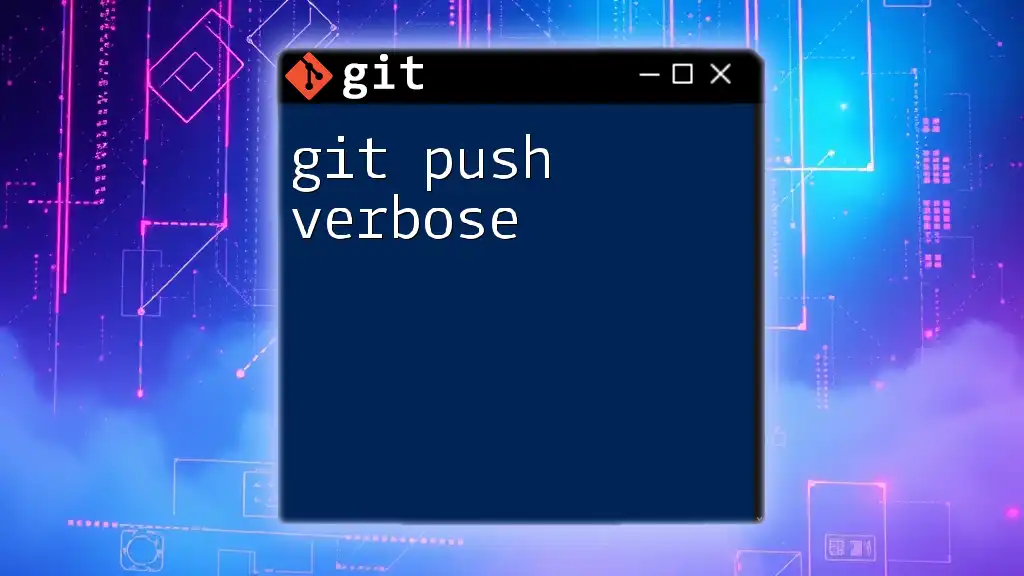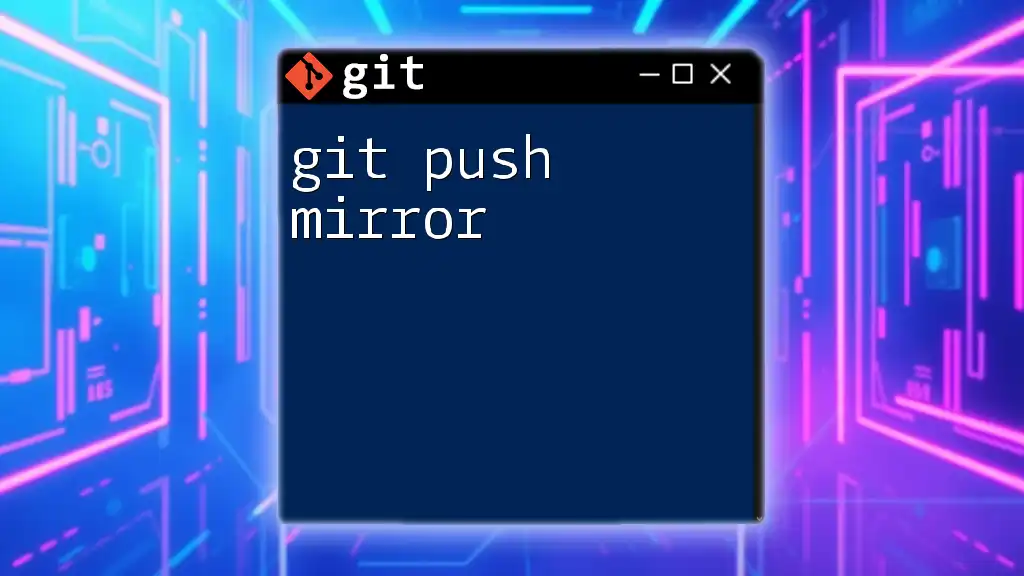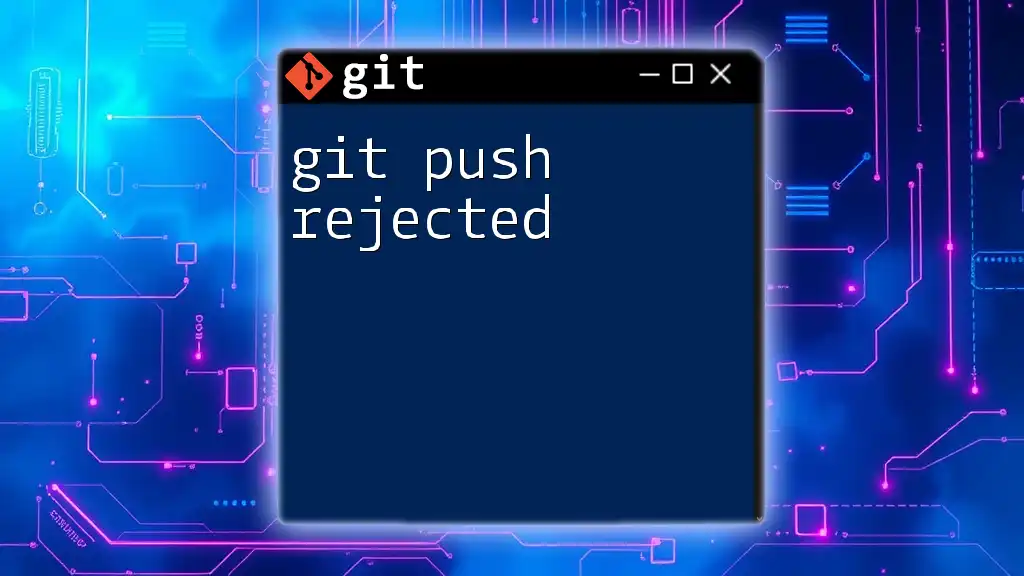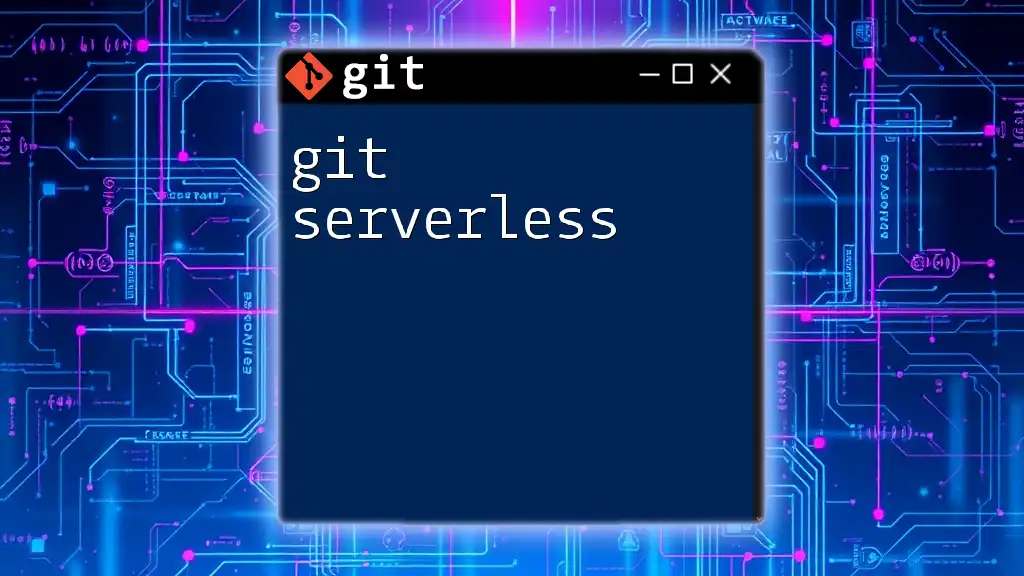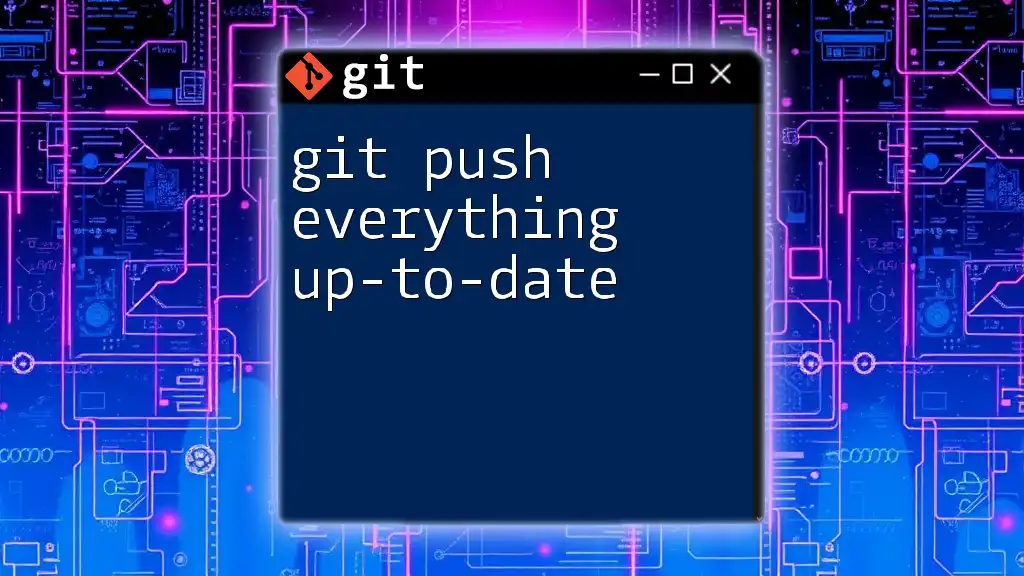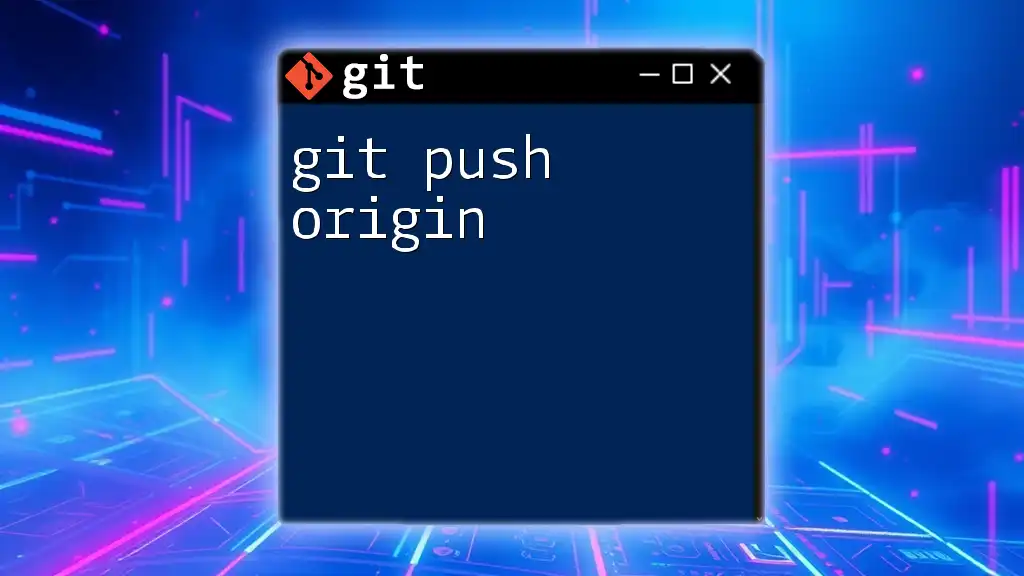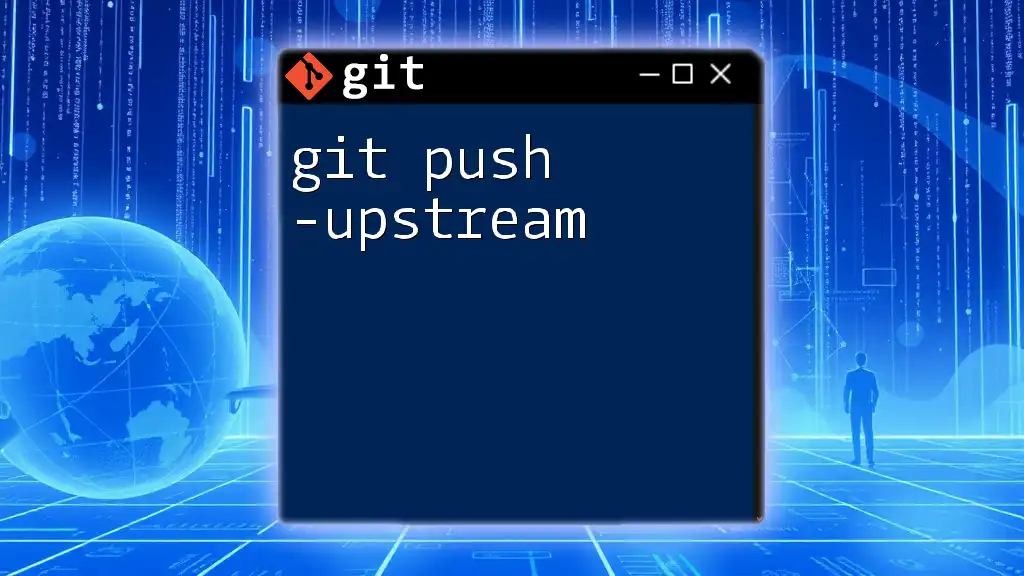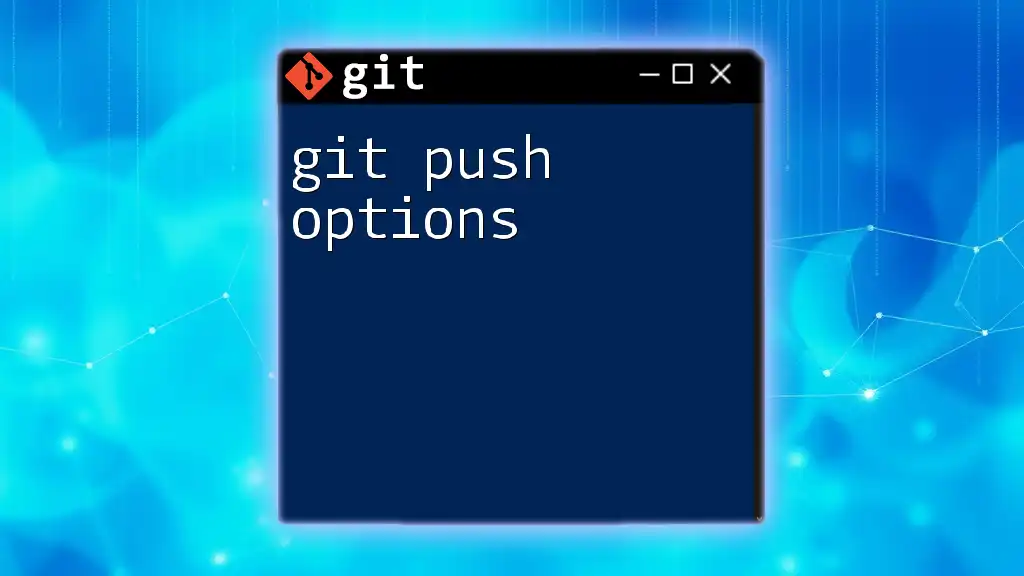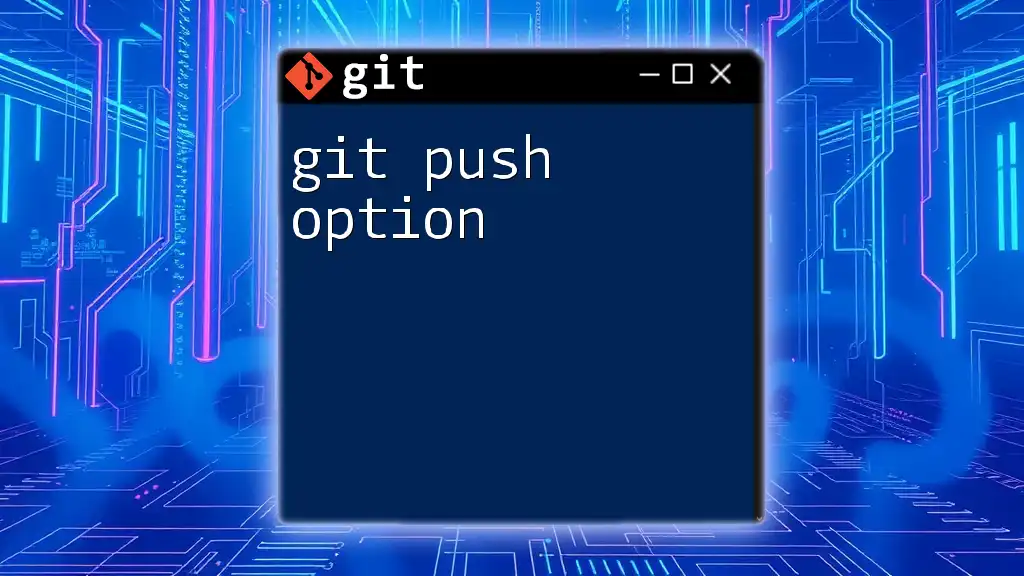The `git push --verbose` command provides additional output information during the push process, helping users see what changes are being transferred to the remote repository.
git push --verbose origin main
Understanding Git Push
What is `git push`?
The `git push` command is a fundamental aspect of using Git, serving as the bridge between your local repository and a remote repository. When you make changes in your local workspace and are ready to share these updates with others—be it teammates or other collaborators—you utilize the `git push` command. Essentially, it uploads your local commits to a remote repository, ensuring that your work is available to others.
The operation of `git push` can be thought of in terms of two key repositories: your local repository, which contains your current changes, and the remote repository (often hosted on platforms like GitHub, GitLab, or Bitbucket), where you push your changes for collaboration and backup.
Why Use `git push`?
Using `git push` is critical for several reasons:
- Collaboration: It allows your teammates to access the latest changes in the codebase, which is essential for effective collaboration.
- Updating Remote State: Pushing changes ensures that the state of the remote repository reflects your latest work, preventing conflicts and inconsistencies.
- Version Control: It acts as a checkpoint, tying your local code at a certain point in time to the remote repository.
Understanding how to effectively use the `git push` command, especially with certain options like verbosity, can significantly improve your workflow.

The Verbose Option in Git Push
What Does Verbose Mean?
In the context of Git commands, verbosity refers to how much information is provided in the output. By default, running a `git push` command may not yield detailed feedback on what Git is doing under the hood. The verbose option, indicated by the `-v` flag or `--verbose`, provides additional information about the push operation.
Why Use the `--verbose` Flag?
Using the `--verbose` flag while pushing serves several purposes:
- Increased Clarity: It provides more context about what is happening during the push operation, such as which commits are being pushed and the status of the remote repository updates.
- Feedback during Push Operations: You’ll receive more granular feedback especially useful in a team setting, helping you understand what changes have gone through.
Knowing how to effectively leverage this option is a key component of professional Git use.
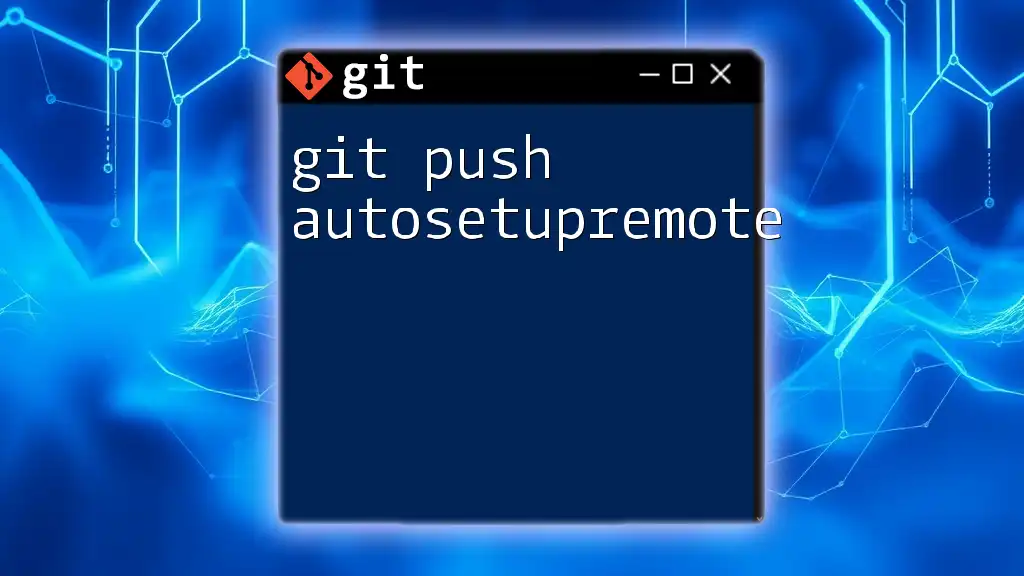
How to Use `git push --verbose`
Basic Syntax
The syntax for using the verbose option in a `git push` command is straightforward:
git push --verbose [remote] [branch]
- remote: This is the name of the remote repository you are pushing to (usually `origin`).
- branch: This is the name of the branch you are pushing your changes from (often `main` or your current feature branch).
Examples
Basic Example
For a simple push operation with the verbose option, your command may look like this:
git push --verbose origin main
When executed, you’ll see output that details the process. It will summarize the objects being sent, including commit references and whether it was a fast-forward merge or not.
Example with Error Handling
At times, issues may arise during a push that can be clarified with verbose output. For instance, if you try to push a branch that hasn't been updated with recent changes from the remote repository, you might run into a scenario like this:
git push --verbose origin feature-branch
The verbose output will show any conflict messages or reasons why the push failed, giving you indispensable insights into what went wrong and informing you how to rectify the issue.
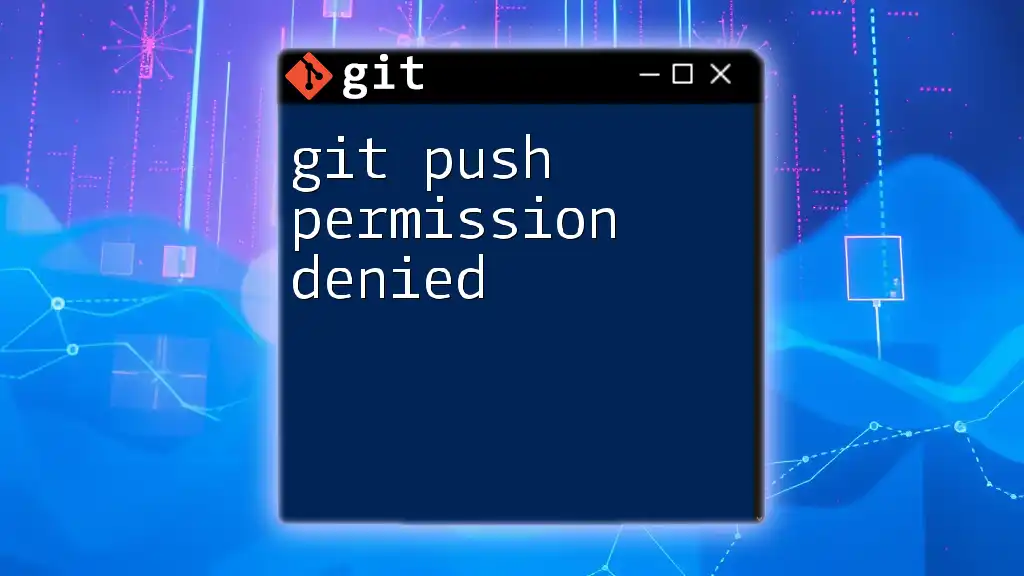
Common Use Cases for `git push --verbose`
In Team Environments
Using `git push --verbose` becomes increasingly valuable in team settings. When multiple developers push changes to a shared remote repository, understanding the context of each push can prevent miscommunication and overlap.
For instance, you can easily see what commits were included in a push, thus enabling your teammates to stay informed about ongoing changes, fostering a more collaborative environment.
During Code Review Processes
Verbose output provides excellent detail that can aid in code review processes. Reviewers can see what updates have been made, allowing them to understand the evolution of the code better. When preparing for a pull request, including the verbose option can demonstrate transparency regarding the changes being proposed.
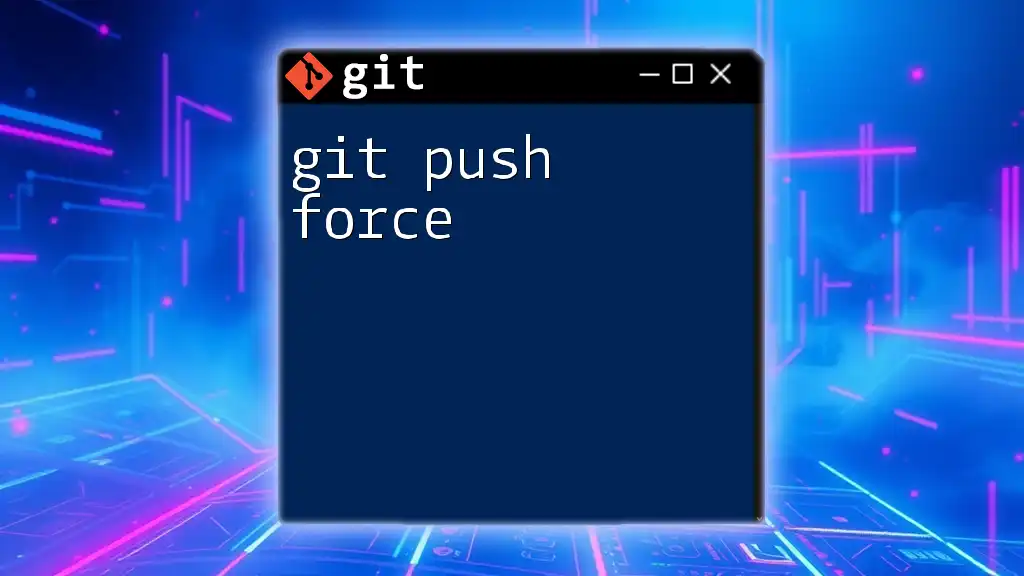
Advanced Verbose Features
Understanding the Output from `git push --verbose`
When you execute a push with verbosity, you'll encounter a comprehensive output.
- Push Summary: The output lists how many objects are being transported and their respective sizes.
- Commit Details: It shows details about each commit being pushed, such as authorship and message.
- Error Messages: If anything goes wrong, verbose output will provide a detailed error message, shedding light on what action you might need to take next.
Configuring Verbose Output Globally
If you find the verbose output helpful, consider setting it as a default for every push. You can do this with the following command:
git config --global push.verbose true
This adjustment means any future push commands will automatically display verbose output without needing to specify the `-v` flag every time. However, be cautious—if used excessively, it might clutter your terminal with unnecessary information.
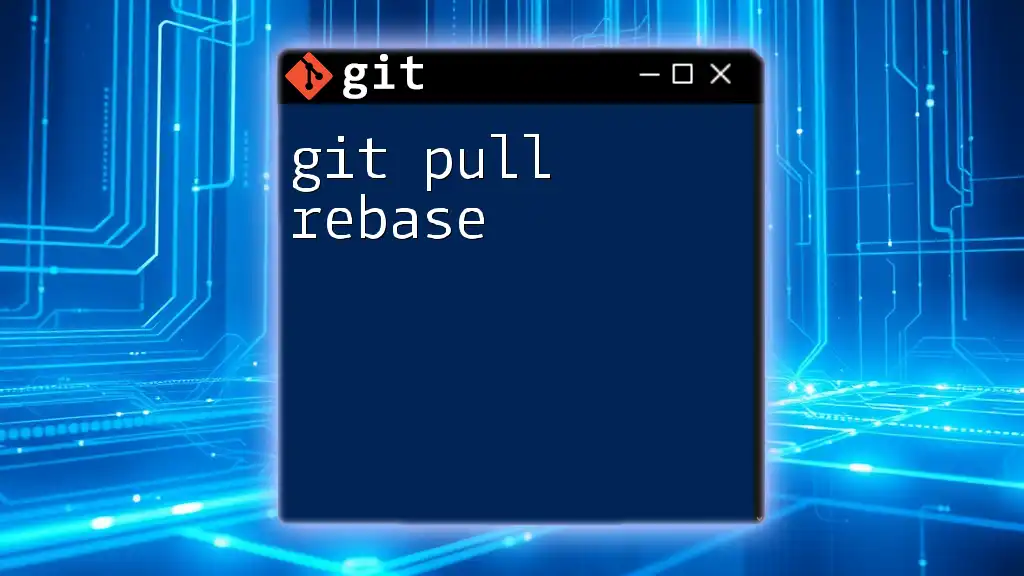
Troubleshooting Common Issues
Recognizing Issues through Verbose Output
Verbose output can help identify several problems during push operations:
- Network Issues: If there is a problem connecting to the remote repository, verbose output will indicate it.
- Authentication Issues: Any problems with credentials used to connect to the remote will show up in the verbose feedback.
Best Practices for Resolving Issues
When encountering issues during a push, follow these steps:
- Review Verbose Feedback: Look carefully at the error messages and context around them to understand what went wrong.
- Check Your Branch: Ensure you are on the correct branch and that it is up to date.
- Sync with Remote: If necessary, pull the latest changes from the remote repository, resolving any conflicts before attempting to push again.
For additional help, don’t hesitate to refer to official Git documentation or seek assistance from community forums.
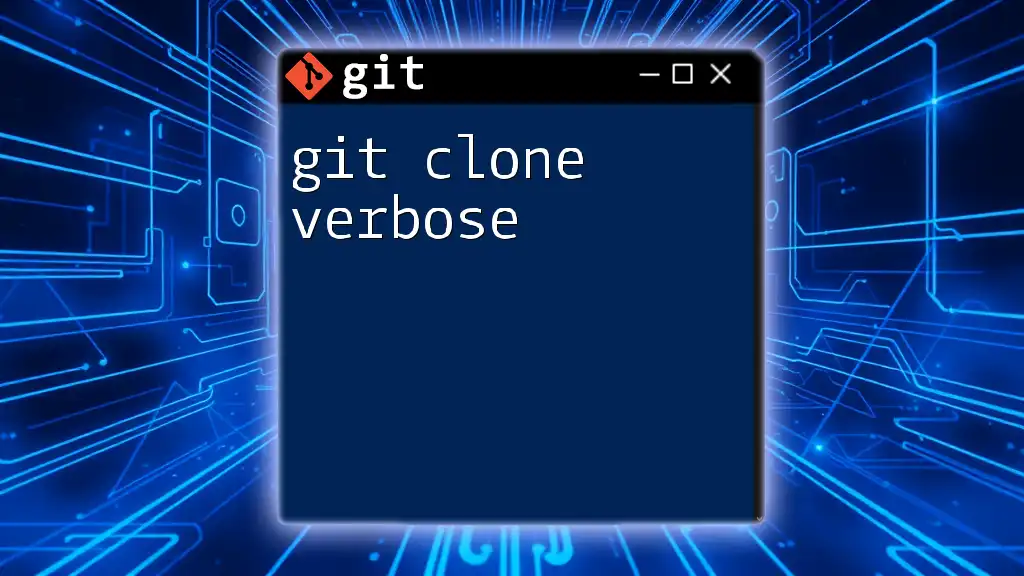
Conclusion
The `git push --verbose` command is a vital tool for enhancing communication and efficiency during collaboration. By leveraging its output, developers can pave the way for clearer interactions, better teamwork, and a more streamlined workflow. Adopting best practices, such as using verbosity in Git, can significantly improve your overall experience with version control.
Incorporating these insights into your daily workflow fosters a culture of precision and understanding within your team. Make it a habit to utilize verbose output; you’ll find it invaluable in your Git journey.

